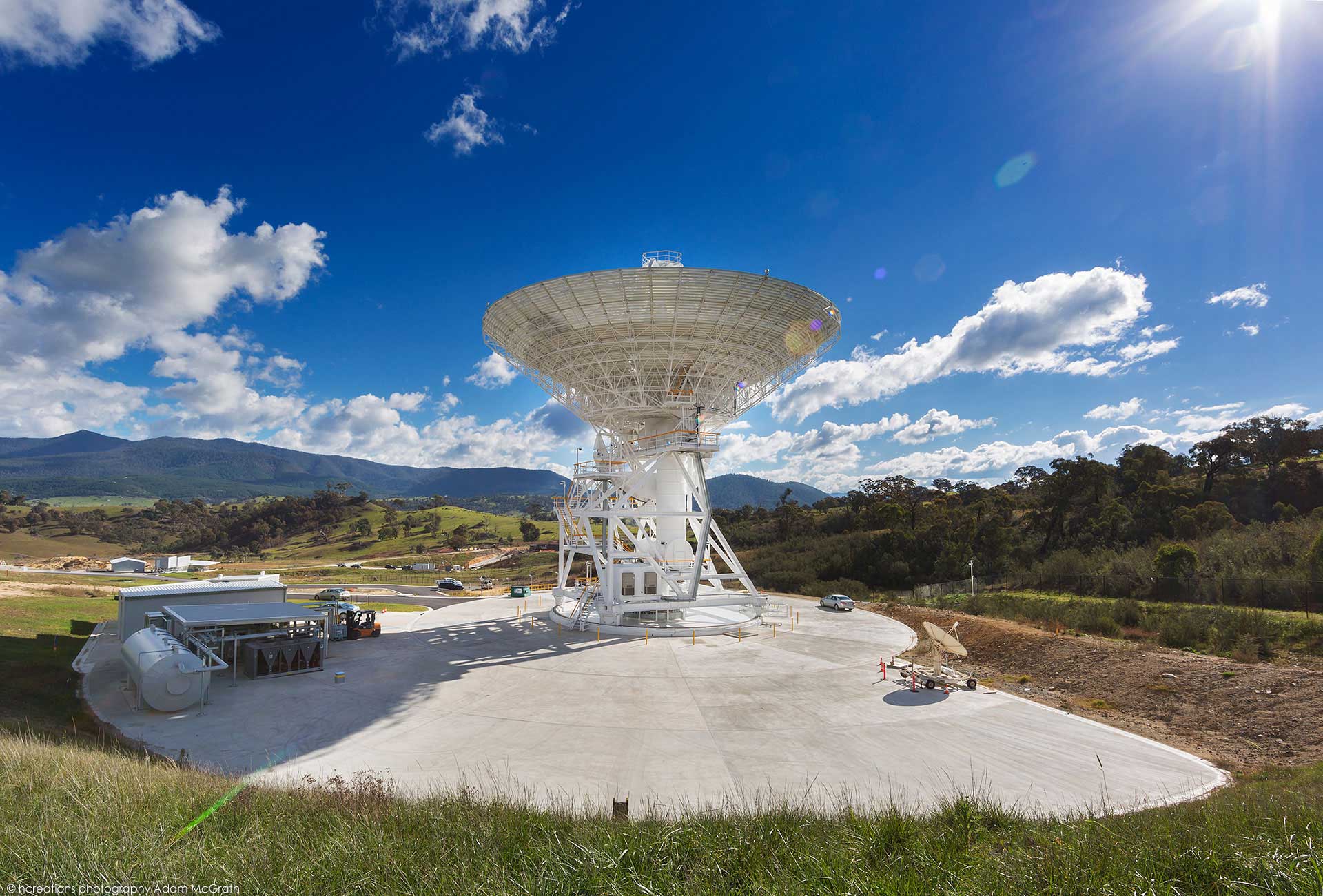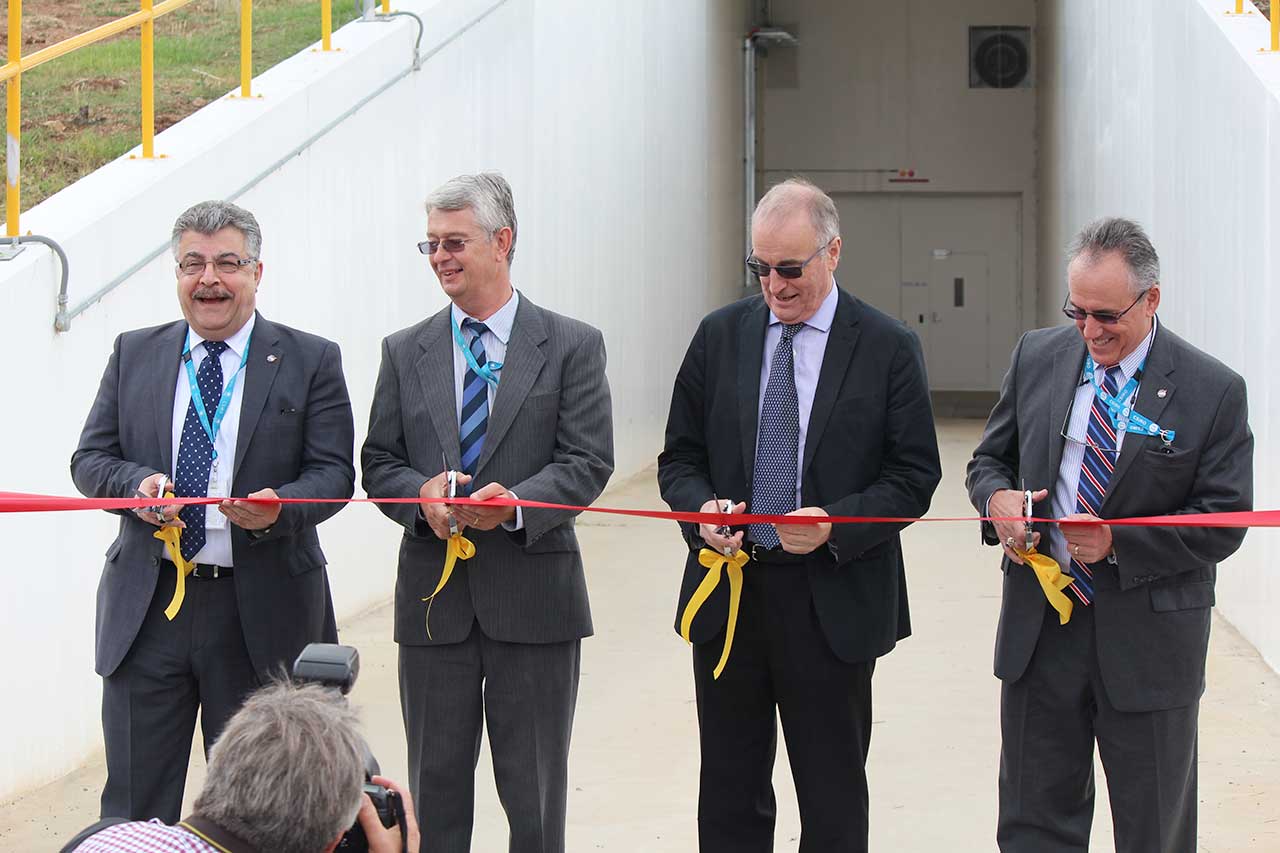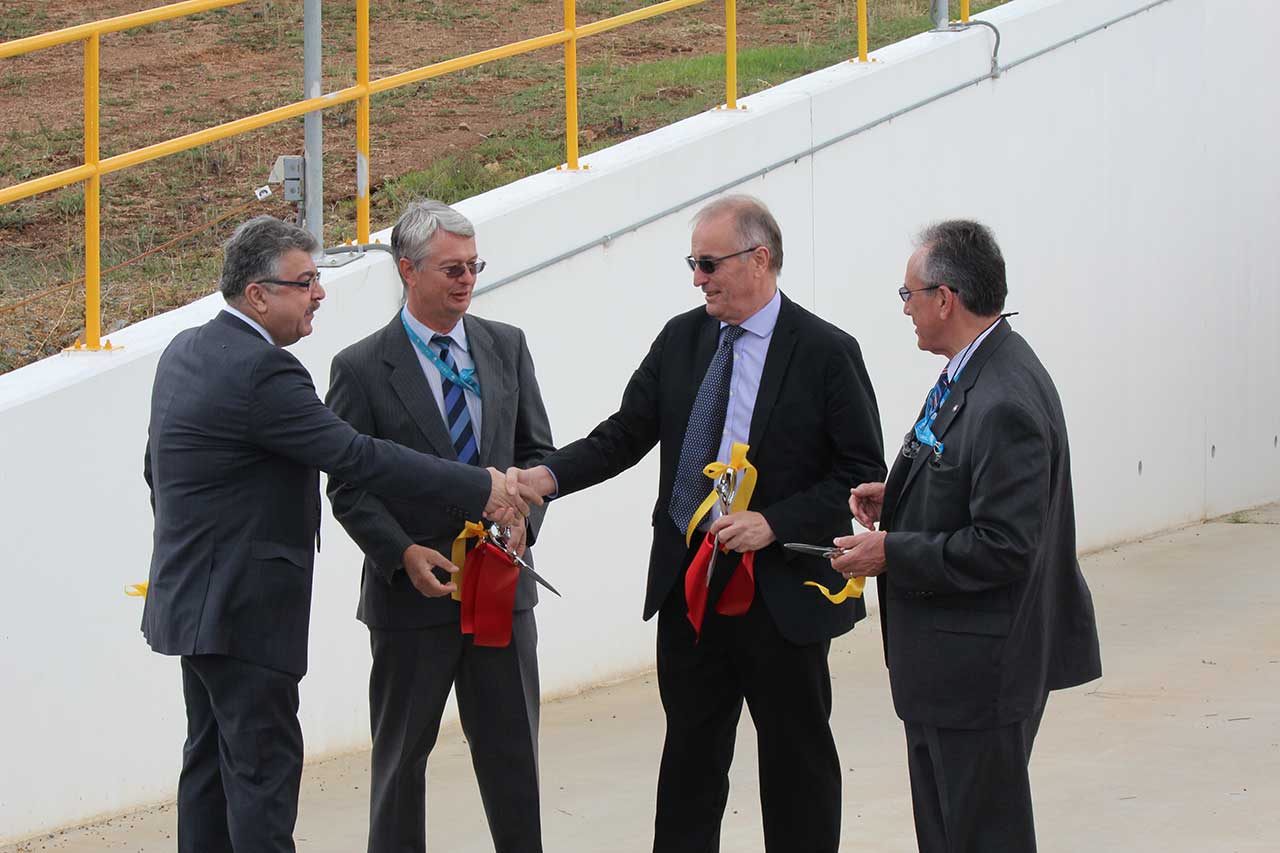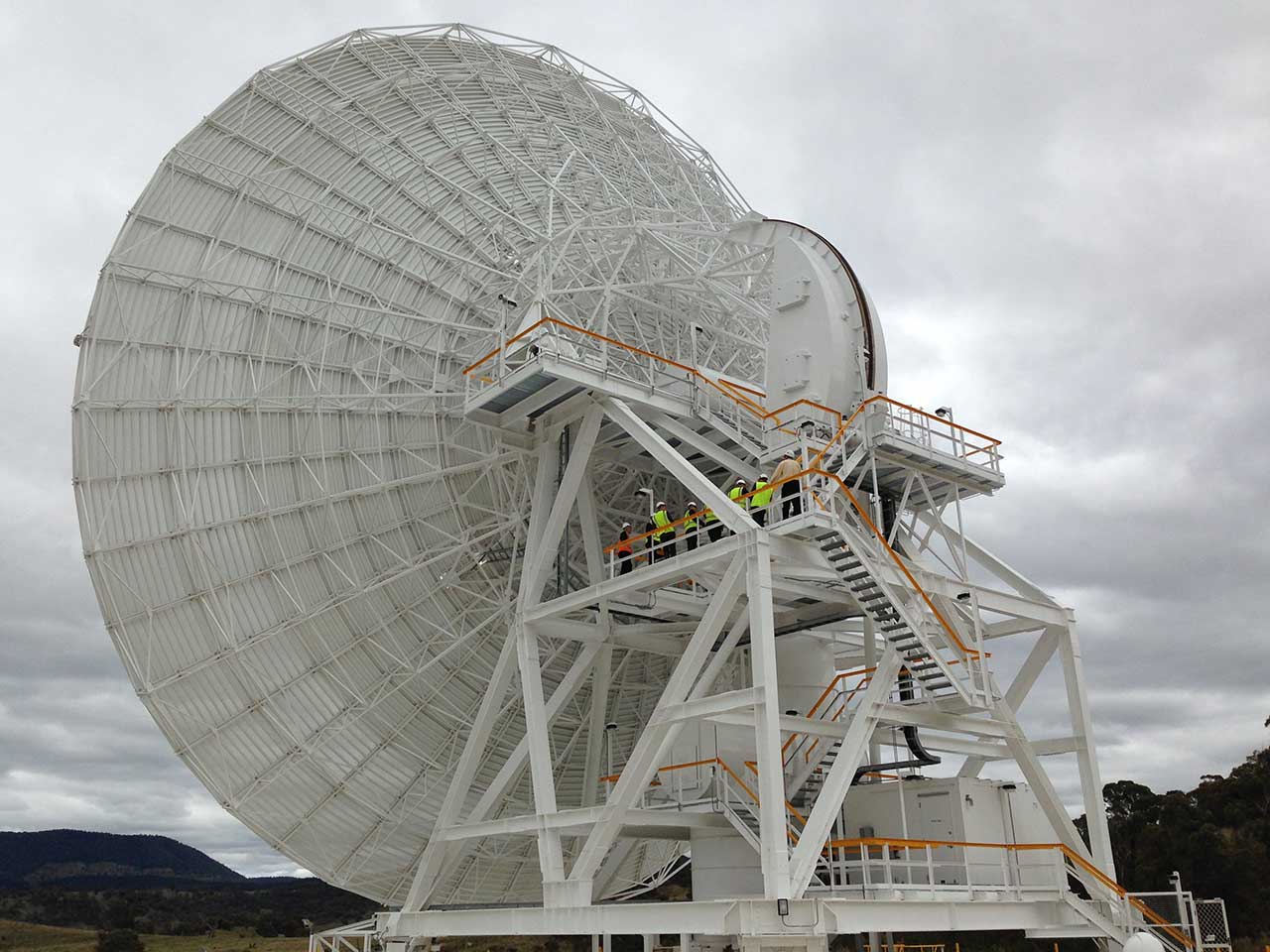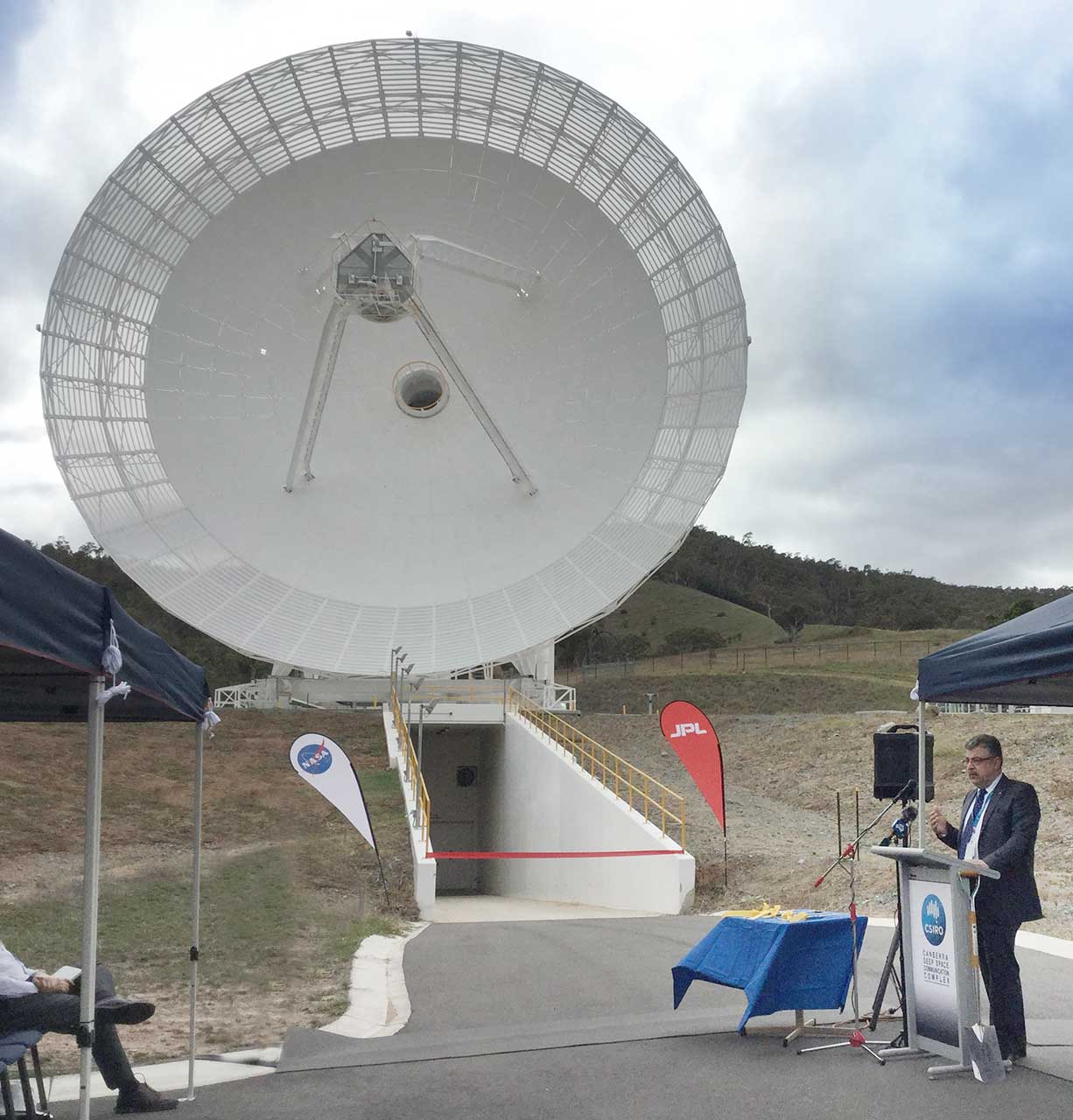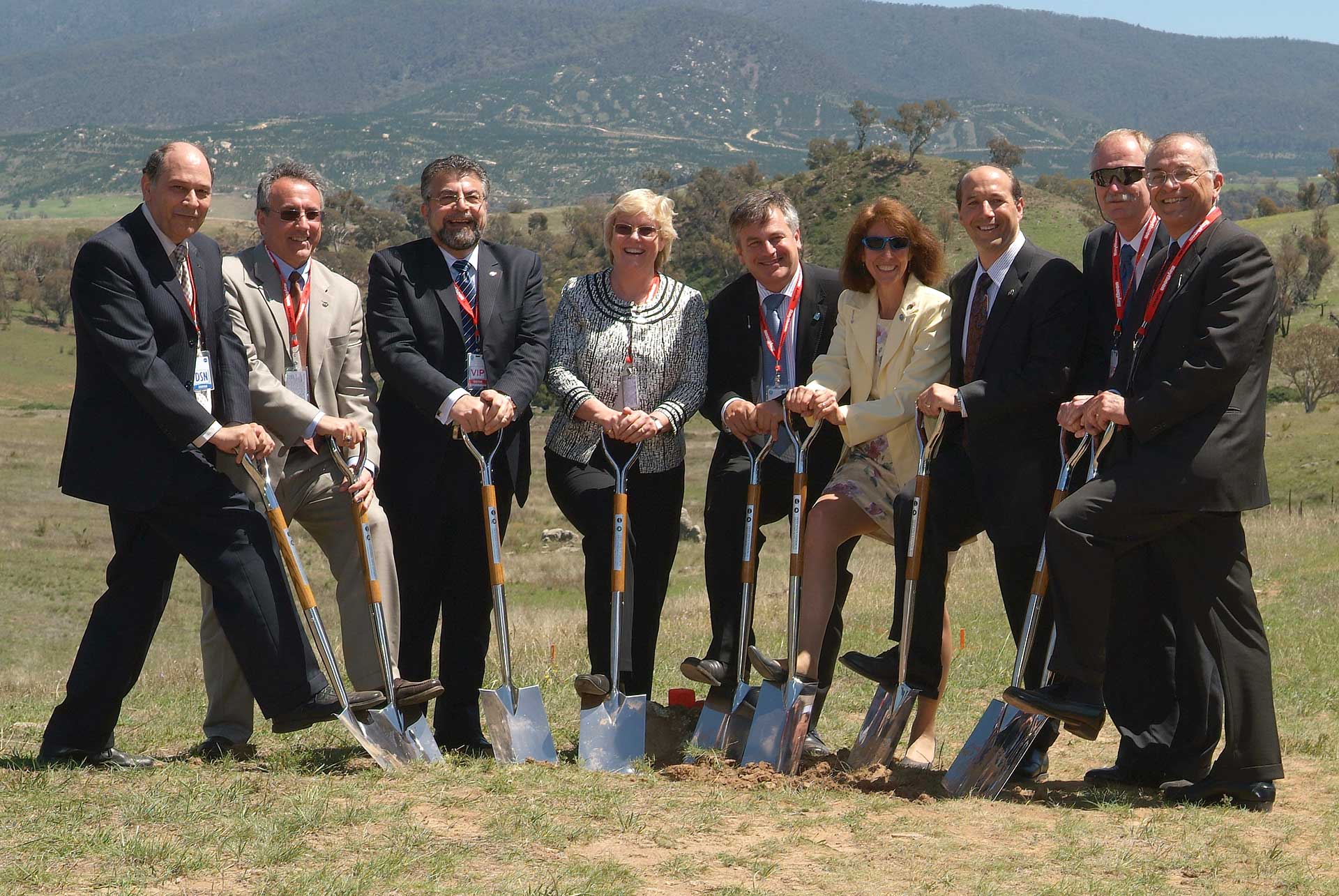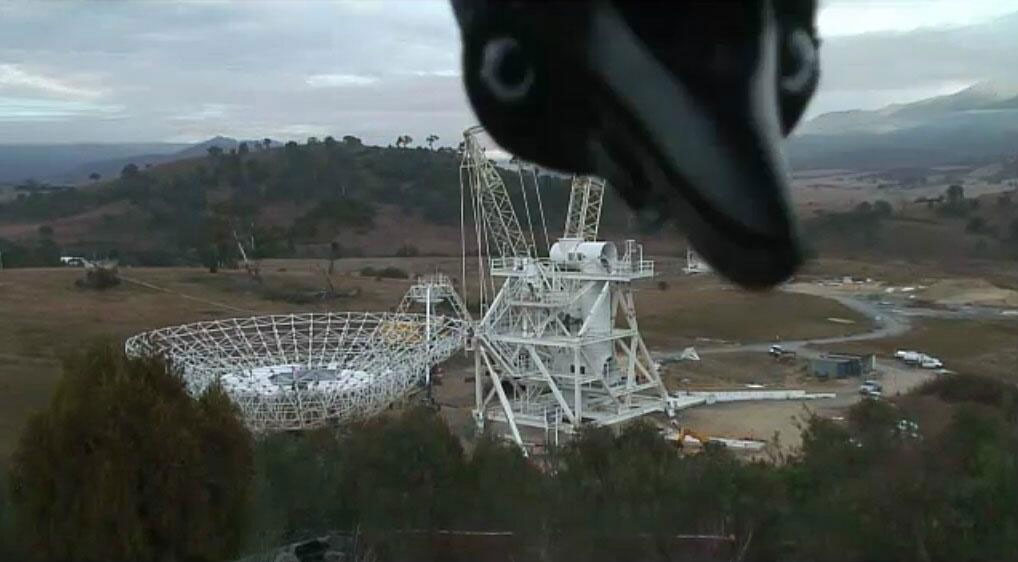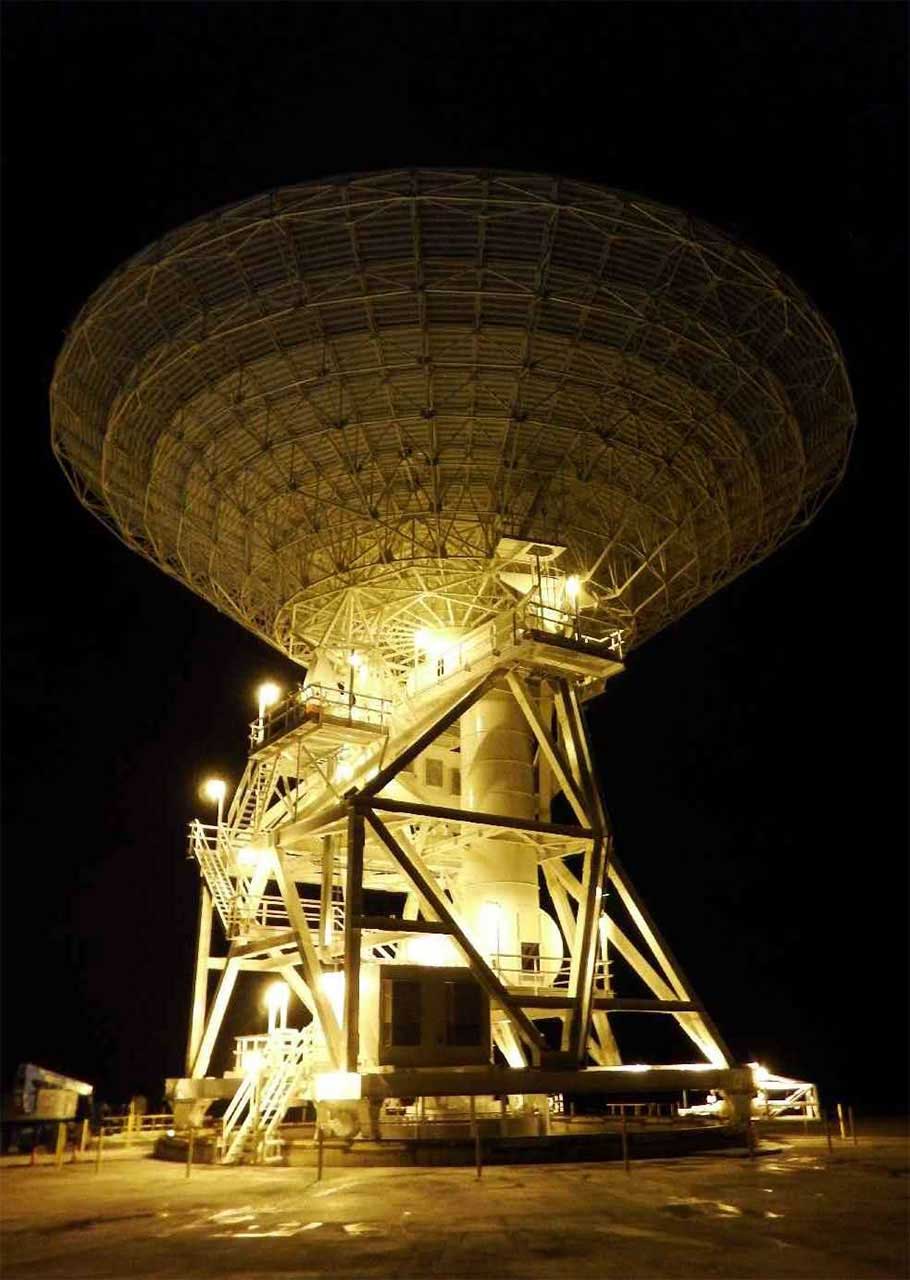NEW VISTAS: Deep Space Station 35 will operate for many decades. What future discoveries it might make, we can’t even begin to imagine. Credit: Adam McGrath
Exactly 5 years to the day from its original ground-breaking ceremony in 2010, the newest antenna dish in NASA’s Deep Space Network was officially commissioned on 25th February 2015, at the CSIRO-managed, Canberra Deep Space Communication Complex (CDSCC).
3,2,1… The ribbon cutting marked the official commissioning of the new Deep Space Network antenna.
Hosted by CDSCC Director, Dr Ed Kruzins, VIP guests included Mr Badri Younes and Mr Pete Vrotsos from NASA’s Space Communication and Navigation (SCaN) division, and Dr David Williams, Executive Director CSIRO National Facilities & Collections and Dr Lewis Ball, Director of CSIRO Astronomy and Space Science. They were joined by representatives from government, industry and CSIRO-CDSCC staff at a ribbon-cutting ceremony to usher the new antenna into deep space operations.
CONGRATULATIONS: NASA’s Mr Badri Younes (left) shakes hands with CSIRO’s Dr Dave Williams following the ribbon cutting with CDSCC Director, Dr Ed Kruzins (2nd left) and NASA’s Mr Pete Vrotsos (right) at the commissioning of Deep Space Station 35.
The new dish, Deep Space Station 35 incorporates the latest in Beam Waveguide technology that increases the sensitivity and capacity for tracking, commanding and receiving data from spacecraft located billions of kilometres away across the Solar System. NASA has invested $55 million in the first of the new antennas and is currently investing an equal amount in a second dish – Deep Space Station 36 – due to come online in late 2016.
GIANT: People are turned into small toys against the enormous size of Deep Space Station 35’s 34-metre dish.
NEW ERA: NASA’s Dr Badri Younes speaking on the future of space communications and journeys to Mars.
“Through NASA, Australia and the United States have worked together in the exploration of space for over 50 years,” Mr Younes said.
“We broke ground on this new antenna project in 2010 and it is of immense pride and satisfaction that we have now reached this milestone and that the antenna will now be able to break new ground on the frontiers opening up to us in space.”
GROUNDBREAKING: VIPs from NASA, JPL, the US Embassy and CSIRO, break ground on DSS35 on 25th February 2010.
The milestone comes one day before the 55th anniversary of the signing of the original space communication and tracking agreement signed between Australia and the United States on the 26th February 1960. It is a partnership that has that has led to many historic firsts and breakthrough discoveries – the first flybys of Mercury and Venus, the vital communication link and television coverage of the first Moonwalk, robotic rover landings on and amazing views from the surface of Mars, the first ‘close-ups’ of the giant outer planets and first-time encounters with worlds such as Pluto.
FAVOURITE PHOTOBOMB: During construction of DSS35, our cameras caught this image which went viral online.
DAY OR NIGHT: Deep Space Station 35 will be operating 24/7 to help make discoveries in deep space.
What future discoveries will be made through Deep Space Station 35, no one can really imagine, but with this new ear on the universe one thing is certain – the sky is no longer the limit.

